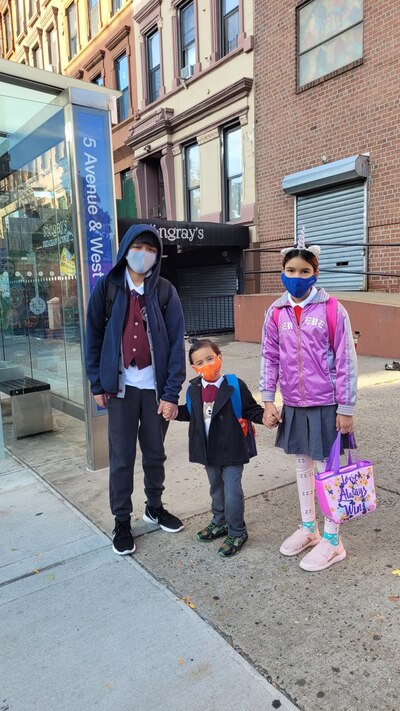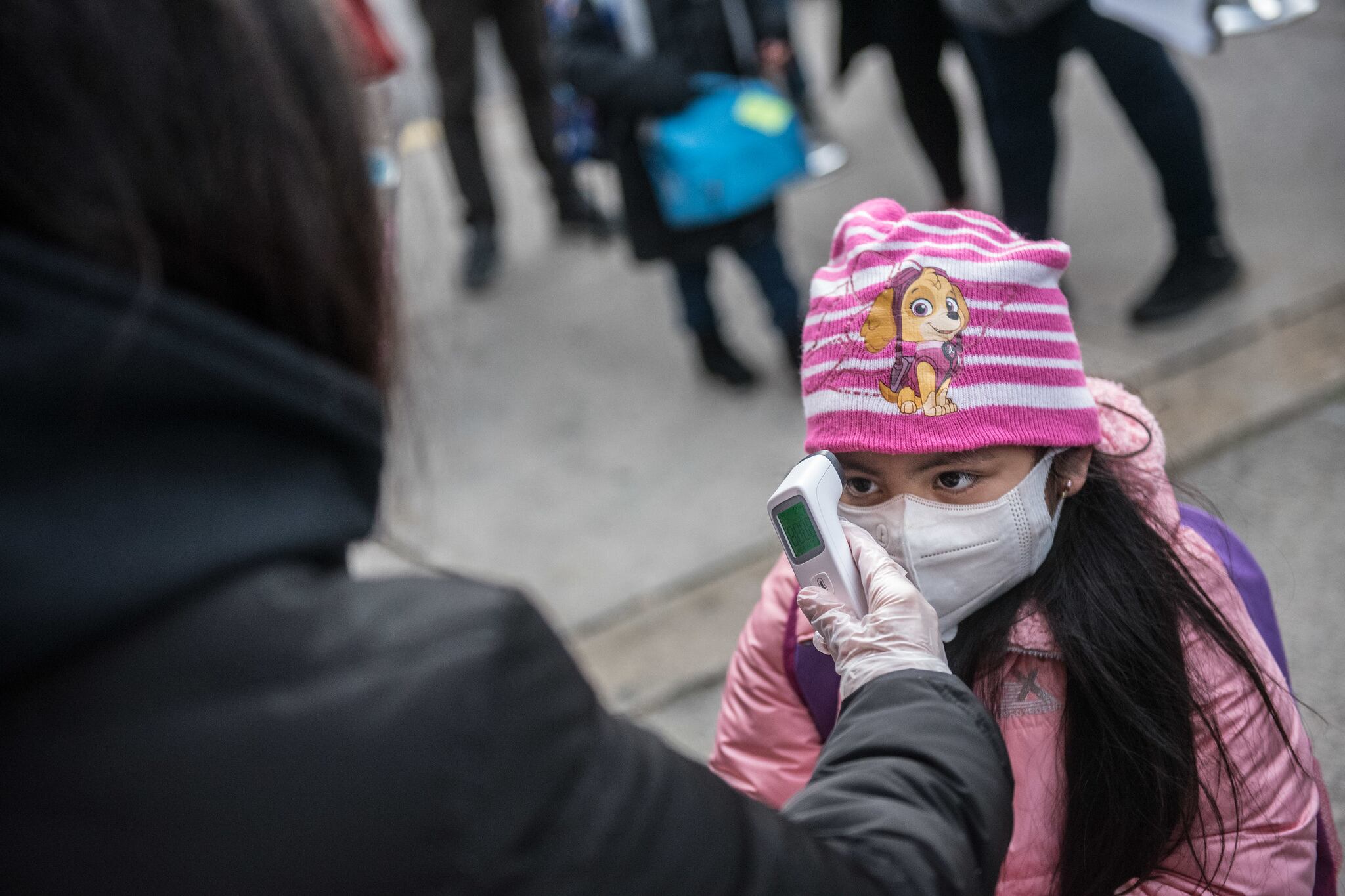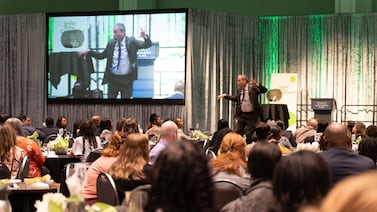East Harlem mom Rosa Diaz was elated to learn that her 4-year-old son would be able to go to school in person five days a week.
For months, he has been attending in-person classes at P.S. 171 just a couple days a week, and his less-structured remote days seemed to set back his ability to recognize letters of the alphabet.
And since Diaz and her husband work outside the home during the pandemic, it has been difficult to ensure their babysitter was logging the boy into his remote sessions. So when the opportunity arose for daily in-person learning, “I was like, ‘Yay, excellent, he needs it,” Diaz said.
But even as city officials press school leaders to offer five days a week of in-person instruction, many students will likely remain stuck with a mix of in-person and remote learning, which can be hard on students and working families. That’s because some schools remain pressed for space and enough teachers to staff two different learning environments at once — all while principals must juggle a complicated mix of scheduling variables.
The push for more in-person instruction comes as New York City reopens school buildings for students in grades pre-K through five, as well as those in District 75, serving children with more complex disabilities. Schools were shuttered citywide last month after the city’s coronavirus positivity rate reached 3%.
When announcing that these schools would reopen, Mayor Bill de Blasio vowed that “most” campuses opening this week will eventually offer five days a week of in-person learning, though he made that declaration before principals were formally surveyed about whether it would be logistically feasible at their individual schools.

So far, 161 elementary schools, or roughly 15%, are offering at least some of their students five days a week of in-person instruction. Department officials said they expect that number to climb as schools get a clearer picture this week of how many students will actually return to classrooms.
“We will be able to deliver,” de Blasio said Wednesday after being pressed on the relatively small number of schools offering daily instruction in person. “Rome wasn’t built in a day.”
Parents who have been offered more days of in-person instruction said they’re thrilled for the return to a more normal schedule instead of the hybrid model, in which students were on campus one to three days a week in most cases and learning remotely the rest of the time. The change won’t affect most families, though, as the vast majority have opted instead for fully remote learning, and there are no plans to allow them to switch back to in-person instruction before a vaccine is widely available.
For principals, pulling off a shift in scheduling in the middle of the school year is a complex task, especially as it could require reassigning students to different classroom teachers. School leaders may not have enough staff or space to offer more in-person teaching, or they may face resistance from educators who don’t want to return to buildings for daily instruction due to the citywide rise in coronavirus cases.
Different students at the same school might receive varying amounts of in-person instruction, depending on those constraints. Diaz’s 9-year-old daughter, for instance, who attends the same school as her son and has also struggled with remote learning, was not offered five days a week of in-person instruction. (Their older son is in middle school, which, along with high schools, are not yet open for in-person instruction citywide.)
That has left some parents disappointed and some principals fielding questions from families who thought their schools would be able to shift more quickly.
“Initially the expectation was out there that most schools would be able to do this, which I think left principals in the inevitable position to be the bearer of the news that in a particular school it wouldn’t work out,” said Mark Cannizzaro, head of the union that represents school administrators. He added that superintendents have begun checking in with principals and asking for explanations if their school indicated that they couldn’t offer five days a week of in-person classes.
But many schools have been able to pivot, finding creative ways to spin up five days a week of in-person classes. At P.S. 145 in Manhattan, principal Natalia Russo quickly sussed out where they could put slightly larger classes to accommodate more students in the building at once.
“We looked at the shared spaces and the gym and the cafeteria were two spaces that we decided we could use to best fit the classes that had the largest enrollment,” she said, noting that fewer than 40% of the school’s students have opted for in-person learning. Over about 72 hours, teachers moved desks, cubbies, and books to make those spaces feel like classrooms and reassured parents that open windows would offer plenty of ventilation.
“It was so clear and transparent, and just thoughtful,” said Sasha Stashwick, whose 5-year-old son is enrolled at the school and is now attending in person every day. “It was a pretty joyous scene at drop-off.”
Other schools are still weighing all of the variables to determine if five-day-a-week instruction is feasible. Schools have been instructed to switch students to remote learning if they don’t show up in person this week without an excuse, which means principals may not yet have a full count of how many students they’ll need to accommodate in person and whether they’ll have the staff for expanded in-person learning. Meanwhile, some students are returning to in-person classes after the city offered one window in November to switch from fully remote learning.
Janet Huger, principal of the East New York Elementary School of Excellence in Brooklyn, said she’s still assessing whether she can offer more in-person days at her school — or even if most parents want it. About 65% of the families at her school have opted for fully remote learning.
“A lot of parents were a little skeptical of the five days because they weren’t sure about the health risks,” partly because students would spend significantly more time in the building, Huger said. (City officials have also ramped up random testing in schools and will now bar most students from buildings if they don’t consent to it.)
Huger said she is also looking into whether five days a week of in-person classes would require assigning students to different classroom teachers, which she fears could be disruptive.
“Now you’re going to give a child a new environment again?” she said. “That’s what we’re trying to avoid.”







